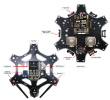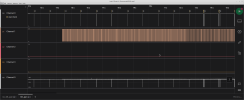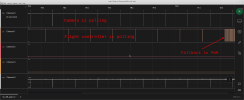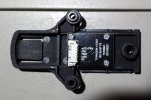What works:
1) The SR24 connected to the DSM port
2) GPS
3) MavLink with ESP8266 WiFi module
4) Remote ID
5) Dual 4in1 ESC, w/o ESC telemetry
6) The TH motors, of course
7) QGC via WiFI and USB, with Internet access.
What needs to work:
1) TH telemetry
2) TH Camera
3) TH Lidar
4) Flight tested
1) The SR24 connected to the DSM port
2) GPS
3) MavLink with ESP8266 WiFi module
4) Remote ID
5) Dual 4in1 ESC, w/o ESC telemetry
6) The TH motors, of course
7) QGC via WiFI and USB, with Internet access.
What needs to work:
1) TH telemetry
2) TH Camera
3) TH Lidar
4) Flight tested
Last edited:






